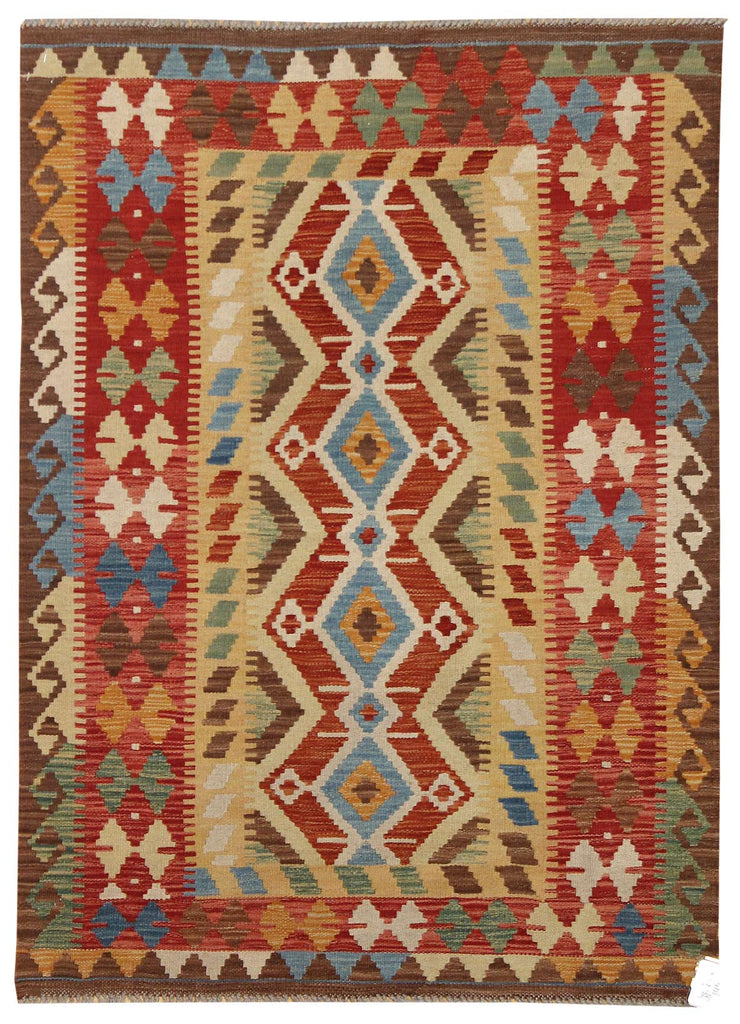You may have heard of kilim rugs, but let's take a closer look at kilims. A kilim rug is a hand-woven, pileless rug made using a flat weaving technique. These techniques are commonly practiced in the geographical areas of Turkey (Anatolia and Thrace), as well as Pakistan, Iran, Afghanistan, North Africa, Central Asia, China, the Balkans and the Caucasus.
Kilim weaving dates back to ancient times, to the eighth and ninth centuries CE and possibly earlier. Kilims had many uses in the home, including use as prayer rugs and dowry items. But beyond practical uses, kilims served as art and self-expression for the people who made them by hand. Kilim weavers used mostly wool, as well as natural dyes. The motifs and colors told stories and made each kilim unique. There are five types of motifs–animal, plants, geometric, symbolic (emotions and natural events), and mixed (a combination of symbols.) Working with these motifs, the artist could make an endless variety of colors and patterns. A lover of kilims can learn the meanings of the symbols and motifs of a kilim, thereby gaining a deeper appreciation of the rug as a work of art, or even poetry.
There are also many different techniques for flat-weaving. Rugs which are flat-woven are not knotted and thus have no pile. Rather, the pattern is developed by using wefts of different colors. Wefts are interlaced with warp threads and changed out for whichever color is required. Flat weaves are often called kilims, or plain weaves, which are really specific subsets of the flat weave. Perhaps the simplest is the weft-faced plain weave. The warp threads are placed in the usual way, but the dyed weft threads are woven in such a way that they create blocks of a single color. These rugs are usually reversible, because the weaving technique permits the patterns and colors to be the same on either side. The flat-woven rugs were commonly used because producing flat-woven rugs used less labor and materials than producing knotted pile rugs. Because they do not have a pile, they have a different look and feel. They also can be used in many ways, including wall hangings, bench coverings and bags.
A flat weave rug has other advantages. They are reasonably priced compared to hand-knotted rugs. The wide variety in styles and colors make these rugs suitable for any setting, whether traditional or modern. They are light weight so that they can be easily moved or folded up when not in use. They are also easy to clean, and usually reversible.
How can you recognize a high quality kilim rug? Check to see if it is handmade. Also look at what materials were used. Generally, wool, silk, cotton wool and goat's hair may be used in a high quality rug. The better the materials, the better the rug. The use of natural dyes is important. Colors produced by natural dyes will fade slowly and beautifully. When shopping for a kilim rug, always ask when and where the rug was made. By asking this question, you will learn about the region and design of the rug. An experienced dealer will be able to discuss the background of a kilim.
Whether you choose to place your kilim on the floor or hang it on the wall, it represents the beauty and romance of its history, as well as the artistic creation and stories of its maker. Look for a rug that is well-made and will suit your decor, but also choose the one you fall in love with. If you have questions about purchasing a kilim, please consult with one of our experts here at Landry & Arcari.


